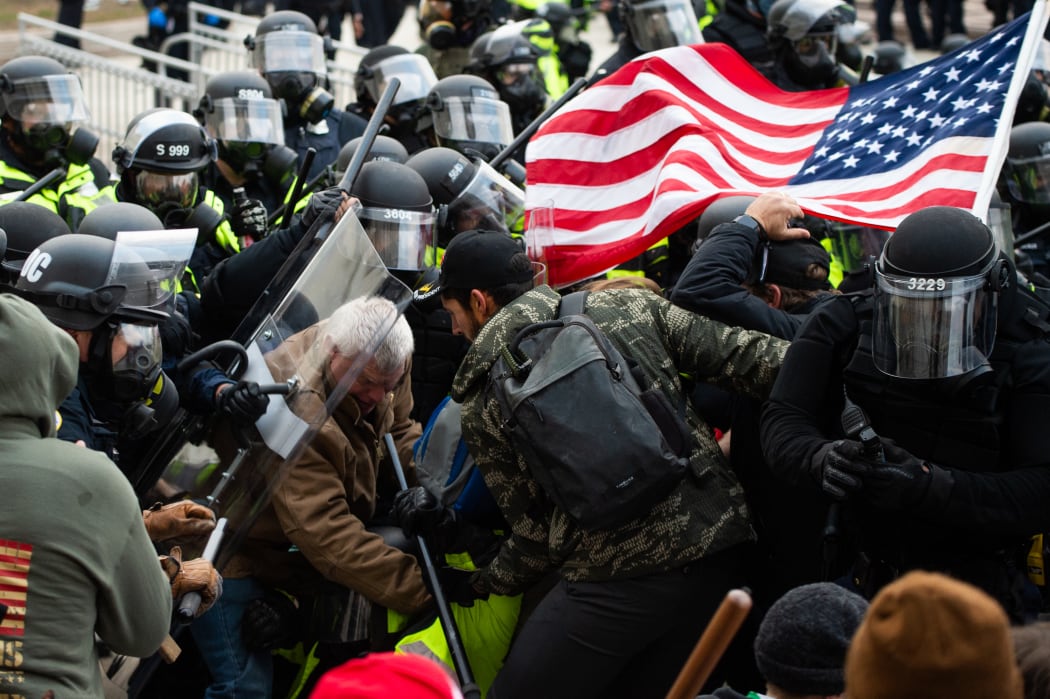The riots in Washington DC on 6 January stormed headlines around the world for their ferocity and the type of people involved.
Many of the people in the riots and who stormed the Capitol building were wearing patches and insignia of several self-defined "Militias".
Dr Amy Cooter, Senior Lecturer in sociology at Vanderbilt University in Nashville Tennessee, has been researching these militia groups and people who join them for the last ten years.

Photo: AFP
It’s written into the United States constitution that "A well regulated Militia, being necessary to the security of a free State, the right of the people to keep and bear Arms, shall not be infringed." But Cooter says that was made in the context of America breaking free from England and its dubious to argue its relevance today.
“Traditionally, lawyers and politicians have largely interpreted a ‘well regulated militia’ to mean military or something officially recognised by the government. But many militia members themselves say you can be organised without necessarily reaching that threshold.”
She says militias often have veterans in them and long for an imagined American past. She says they will often have a founding father as a symbol and the Gadsden (don’t tread on me) flag is a common sight.
“They see it as reflecting that American revolution ideal and notions of independence in going about life in one’s own libertarian type of way.”
While these groups are often described as far-right, Cooter prefers to call them nostalgia groups.
“Many of these groups that are lumped under that far-right category actually have complicated politics. Many of them are more libertarian, they’re very conservative about the economy, about gun rights but many of them are actually pro-choice, pro-LGBT rights and that doesn’t necessarily fit with what we think of as right-wing ideology.
“Instead what’s more important is that backward looking frame, the nostalgia for something that already happened in the past that they think is gone. What that looks like is different across those groups, but the core idea is they think its their job to prevent further change and maybe to try regain that past era.”
She says many of these groups advocate for “simpler times”, smaller government, and self-reliance.
“They believe that our government is too big, that we have become – in their terms – a welfare state that makes people lazy, that makes people not innovate.”
Cooter says militias don’t normally put that ideology in overtly racist frameworks, but neo-Nazi groups do.
“They talk overtly about how white people, and white men specifically, had more political power and that being the threshold they prefer.”
She says there’s a lot of infighting and disagreement between different militia groups, but the riot at the Capitol showed what can happen when the groups come together with a common goal.
“They were able to work together in the moment and we clearly saw that law enforcement had underestimated the potential threat of them as a group. They have their limits in their ability to coherently act, I still think we should take them more seriously than we generally do.”

